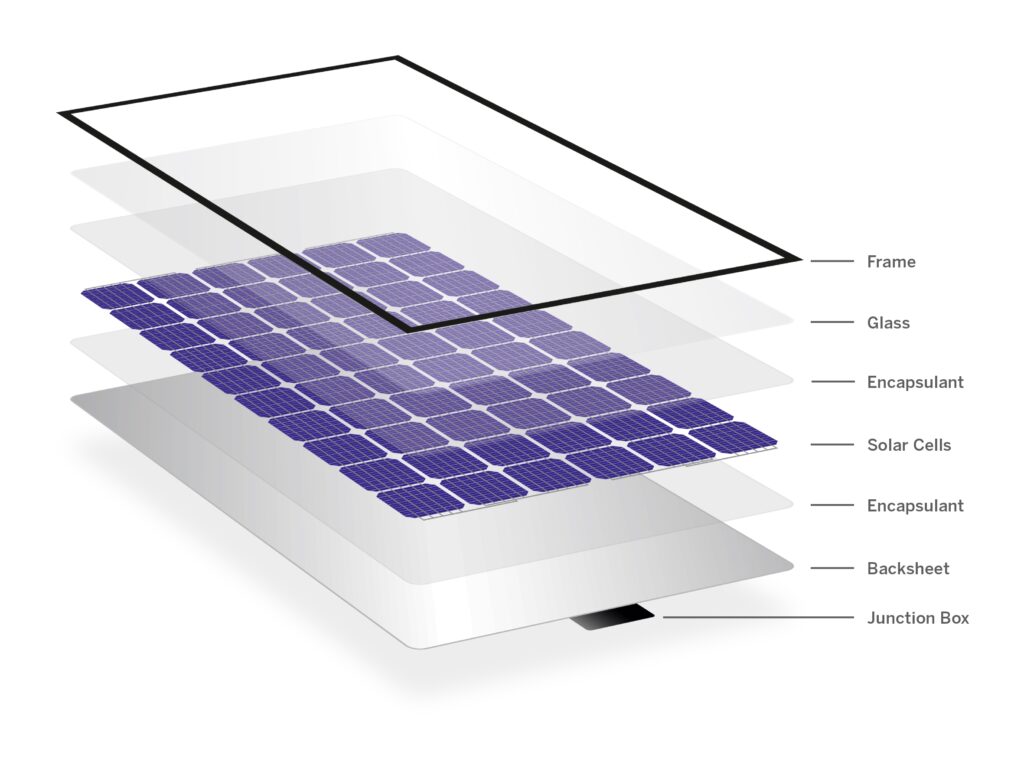A solar panel, also known as a photovoltaic (PV) panel, consists of several key components that work together to convert sunlight into electricity.
- Solar Cells (Photovoltaic Cells): Solar cells are the heart of the solar panel. They are made of semiconductor materials, usually silicon, which can absorb sunlight and convert it into direct current (DC) electricity through the photovoltaic effect. Solar cells are connected in an array on the panel’s surface.
- Encapsulation: Solar cells are typically encapsulated in protective layers to shield them from environmental factors such as moisture, dust, and mechanical damage. Encapsulation materials are usually made of glass or specialized plastics that also allow sunlight to pass through.
- Front Glass: The front surface of a solar panel is covered by a layer of tempered glass. This glass protects the solar cells from physical damage, UV radiation, and weather conditions while still allowing sunlight to reach the cells.
- EVA (Ethylene Vinyl Acetate) Film: Behind the solar cells, there is usually a layer of EVA film that serves as an adhesive and encapsulant. EVA film bonds the solar cells to the front glass and the backsheet while protecting them from moisture and providing some level of shock absorption.
- Backsheet: The backsheet is a layer on the rear side of the solar panel. It provides additional protection against environmental elements and acts as an electrical insulator to prevent electrical contact with the mounting surface.
- Frame: Many solar panels are framed with aluminum or steel structures to provide support, rigidity, and protection to the delicate components within. The frame also allows for easy installation and mounting on various surfaces.
- Junction Box: The junction box is located on the back of the solar panel and houses electrical connections. It contains bypass diodes, which help mitigate the impact of shading and improve the overall performance of the panel by allowing current to flow around shaded or malfunctioning cells.
- Wiring: The solar cells within the panel are interconnected with wiring to create a series or parallel circuit, depending on the desired voltage and current output. The wiring routes the generated electricity from the solar cells to the junction box.
- Connector and Cables: The junction box is connected to the outside world through cables and connectors. These cables allow the generated electricity to be safely transferred from the solar panel to the larger solar array or electrical system.
These components work together to capture sunlight, convert it into electrical energy, and provide a usable power output. The quality and efficiency of these components, as well as their design and integration, play a crucial role in the overall performance, durability, and longevity of the solar panel.


